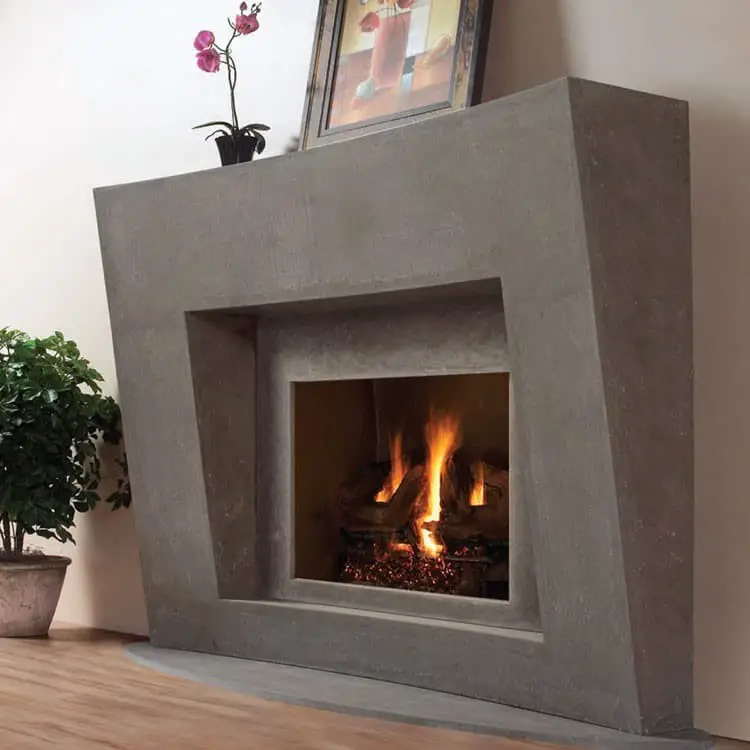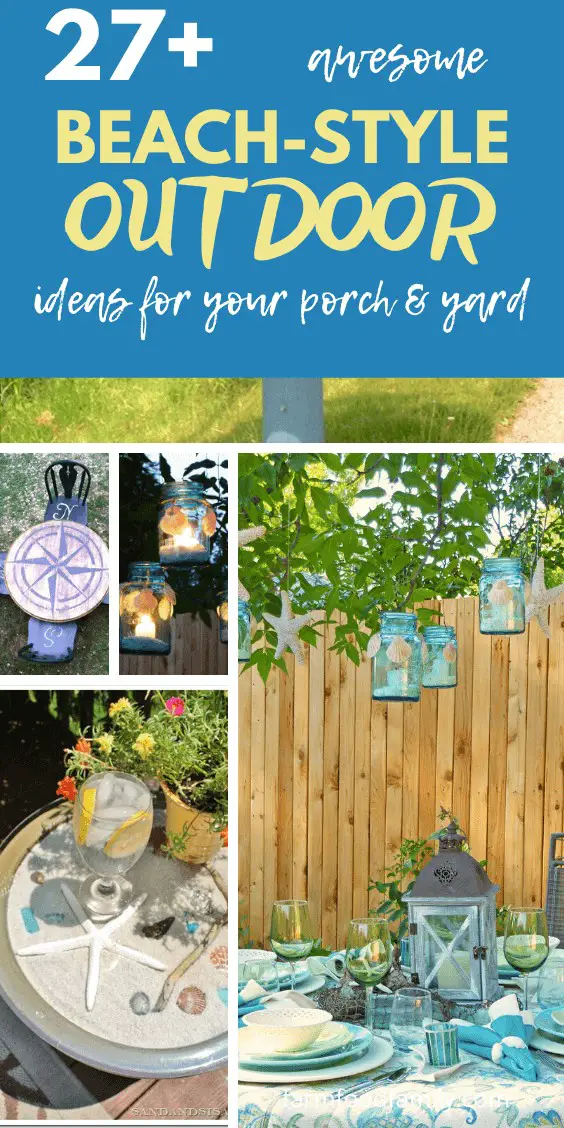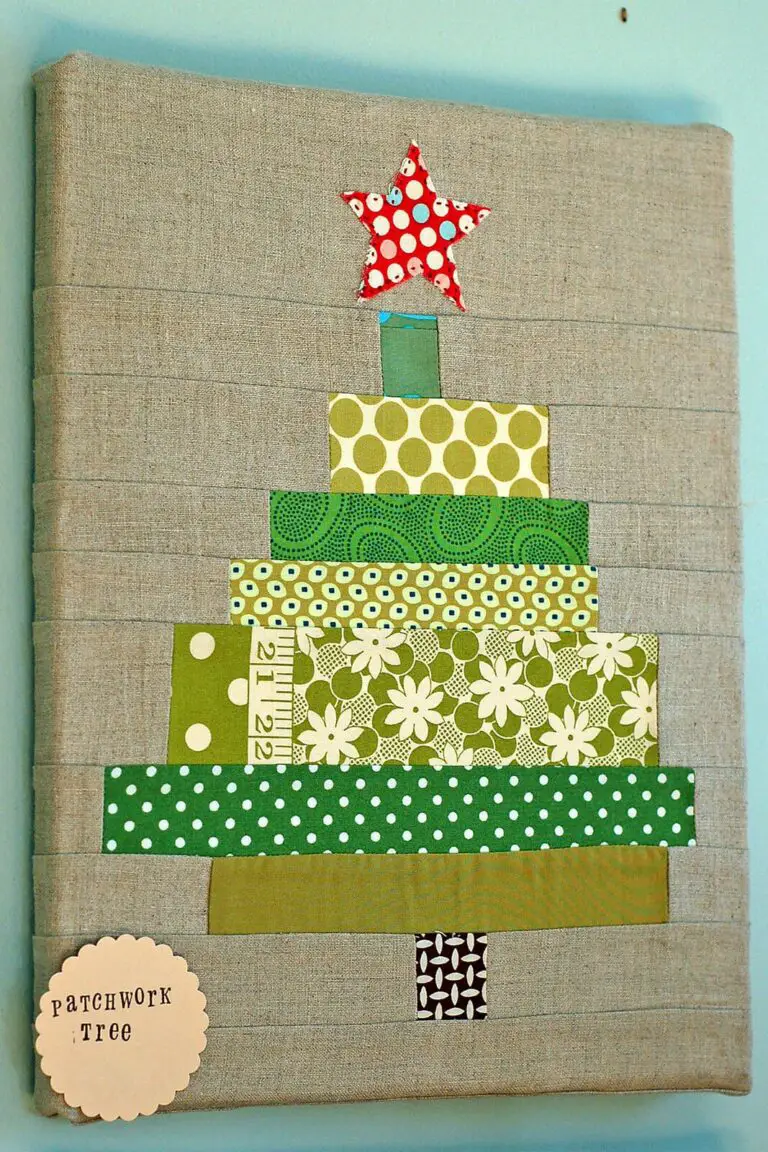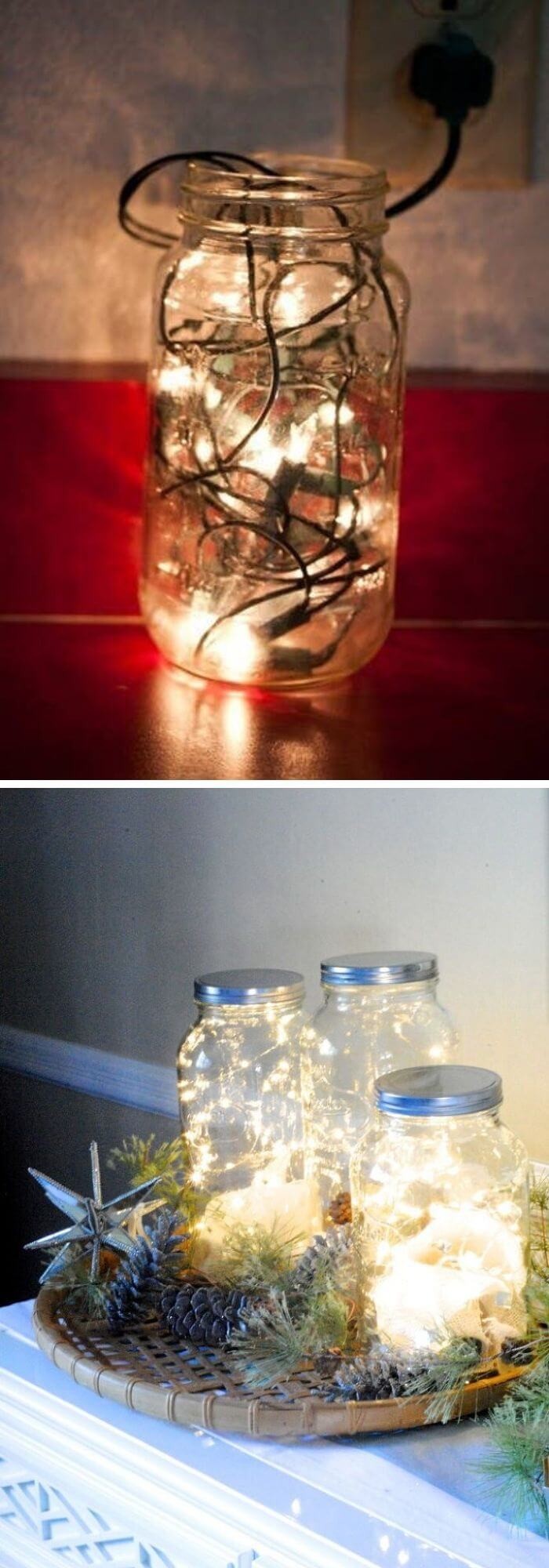31+ Unique Pebble Garden Ideas And Designs (2024)
Imagine a garden that’s not only breathtakingly beautiful but also incredibly easy to maintain. That’s what pebble gardens are all about! In this guide, we’ll take you on a journey to discover the charm and simplicity of these unique outdoor spaces. You’ll learn why they’re a top choice for both beginners and seasoned gardeners alike. First things first, let’s start with the basics. What is a pebble garden, exactly? Why choose one over other types of gardens?
We’ll answer these questions in a clear and concise way, so you can get started right away. Next, we’ll dive into the benefits. Pebble gardens are not only kind to the environment but also a feast for the eyes. With a wide range of design options from serene Zen-inspired spaces to vibrant color schemes, you’re sure to find a style that suits your taste. Now it’s time to get started!
We’ll guide you through the process of choosing the perfect spot, preparing the ground, and selecting the right pebbles for your garden. And if you’re looking for inspiration, we’ve got five stunning pebble garden designs to share with you, complete with step-by-step instructions. Finally, we’ll cover some essential tips on how to maintain your pebble garden. From cleaning and maintaining the pebbles themselves to dealing with weeds and replenishing them over time, you’ll be a pro in no time.
So, are you ready to start your pebble garden journey? Let’s dive in! With this guide, you’ll have everything you need to create a beautiful and low-maintenance outdoor space that you’ll love for years to come.
What is a Pebble Garden?
A pebble garden is a unique landscape design concept that relies on the use of pebbles and stones as its primary elements. This type of garden offers a harmonious blend of aesthetics and practicality, making it a popular choice among gardening enthusiasts. By incorporating pebbles into your design, you can create visually striking patterns or serene spaces that exude a sense of calmness.
Moreover, pebble gardens are remarkably low-maintenance, allowing you to enjoy the beauty they bring without worrying about extensive upkeep.
The Origin of Pebble Gardens
Pebble gardens have been a cornerstone of serene and contemplative landscapes for centuries, their roots tracing back to ancient Japanese and Chinese cultures. In these early civilizations, stones were employed as symbols of majestic mountains, thereby inducing a sense of harmony and calm. As the concept of pebble gardening spread across the globe, it evolved into diverse forms, from Zen-inspired retreats in Japan to rustic rockeries in English country estates.
Today, the timeless allure of pebbles continues to transform outdoor spaces worldwide, infusing them with an essence of simplicity and beauty.
Why Choose a Pebble Garden?
Good for the Earth
Eco-conscious gardeners often opt for pebble gardens as a sustainable alternative. One of the key benefits is reduced water consumption – these gardens typically require less H2O than their traditional counterparts. This not only helps preserve this vital resource but also reduces the strain on local ecosystems. Additionally, the absence of fertilizers and pesticides means that pebble gardens are gentler on soil quality and aquatic environments.
Easy Upkeep
For those seeking a hassle-free outdoor space, pebbles can be an excellent option. Unlike lawns that require frequent maintenance tasks such as mowing, pruning, and watering, pebbles are remarkably easy to care for. A quick sweep or occasional rinse is all it takes to keep them clean and visually appealing, freeing up your time to focus on more enjoyable pursuits.
Design Freedom
Imagine being limited only by your creative vision as you curate a stunning pebble garden. This unique art form allows you to craft intricate patterns, replicate natural landscapes, or even create a peaceful Zen oasis. The diverse range of pebble sizes, shapes, and colors provides an endless array of design possibilities, inviting you to explore and express yourself freely.
nThe decision to cultivate a pebble garden is one that yields numerous benefits.
Not only do these gardens exude beauty, but they also promote a sense of ease and harmony with nature.
Preparing for Your Pebble Garden
Scout the Right Spot
To begin crafting a serene pebble garden, it’s essential to select a site that harmoniously balances two key factors: adequate drainage and sufficient sunlight. Ideally, this location should be free from waterlogged soil and enjoy a decent amount of direct sunlight. For those aiming to create a Zen-inspired oasis, a tranquil and peaceful area is perfect for fostering a sense of calm and relaxation.
Prep the Ground
To begin crafting your pebble garden, it’s essential to clear the groundwork first. This involves removing any existing grass, weeds, or debris from the designated area. Once this is done, install a weed barrier fabric to effectively prevent unwanted plant growth and maintain a visually appealing space.
Pick Your Pebbles
When it’s time to select your pebbles, consider the overall aesthetic you want to achieve. Do you envision a harmonious blend with nature or a pop of color? For an earthy feel, choose neutral-toned stones that blend seamlessly into their surroundings. Alternatively, if you’re aiming for a lively atmosphere, opt for vibrant, colored pebbles that add a splash of personality. The size of your pebbles also plays a crucial role in setting the tone.
Larger stones can create a striking, dramatic look that commands attention, while smaller pebbles add a delicate touch and a sense of subtlety. By taking these factors into account, you’ll be well on your way to crafting a pebble garden that’s truly unique and reflects your personal style.
Pebble Garden Design Ideas
Zen-Inspired Pebble Garden
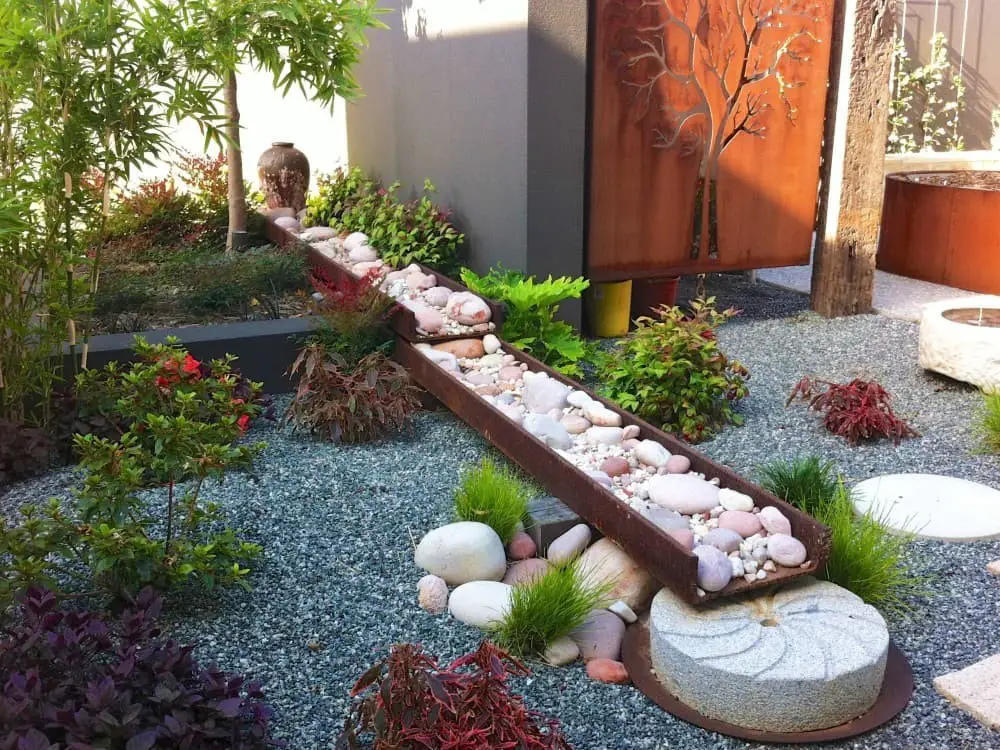
To create a serene and contemplative space in your own backyard, look no further than the humble Zen-inspired pebble garden. This understated yet captivating design combines carefully curated stones, sand, and occasional sprigs of moss to evoke a sense of mindfulness and tranquility. The raked patterns in the sand or small pebbles evoke the gentle lapping of waves, while larger rocks take on the role of majestic mountains or isolated islands.
To bring this serene atmosphere into your own outdoor space, begin by selecting a quiet corner that exudes peace and calm. This doesn’t have to be a grandiose area; even a compact nook can serve as an ideal setting for your Zen garden. Next, gather a few select larger rocks or stones that speak to you. These will become the focal points of your design. Clear the chosen area of any unwanted grass or weeds and lay down a weed barrier to ensure a weed-free existence.
Fill the space with sand or small white pebbles, then place your carefully curated rocks within the designated boundaries. There is no right or wrong way to arrange these larger stones; simply trust your instincts and position them in a manner that feels intuitively correct to you. Finally, using a rake, create gentle patterns in the sand or small pebbles to mimic the soothing movement of water ripples. Feel free to modify these patterns at will, adding an interactive element to your garden.
For added visual interest and a touch of natural beauty, consider incorporating sprigs of moss around your larger rocks, allowing them to softly creep across the surface.
Small Stone Pebble Garden Design
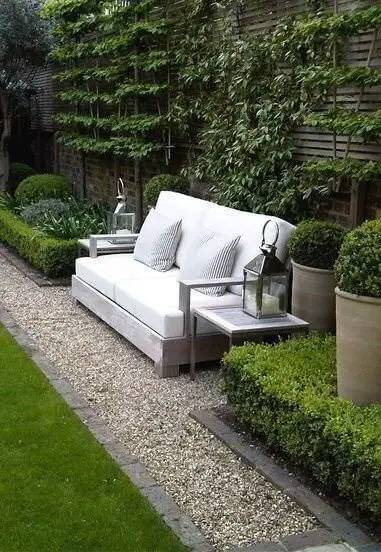
River Pebble Garden
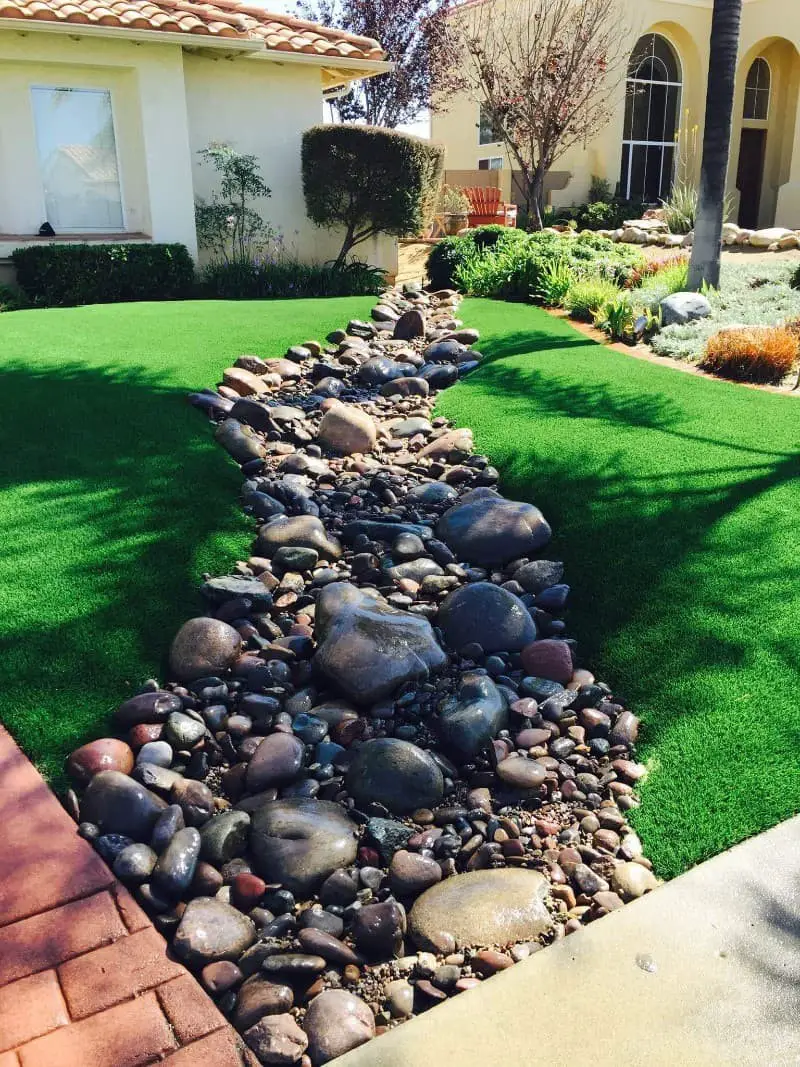
A river pebble garden is a captivating and visually appealing landscape design that brings the serenity of a natural river into your own backyard. The key element is the use of polished river pebbles, which come in various sizes and colors, from soft greys to warm browns, adding an air of tranquility.
This design also incorporates larger rocks and boulders to mimic the look of a river bank, as well as plants that would naturally grow along a riverbank, such as grasses, ferns, and flowering perennials. To create this stunning landscape, start by selecting a location in your garden where you want to bring the river effect.
Next, design the shape of your ‘river’ using a hose or rope, then excavate the area, taking into account the size of your pebbles and whether you’re incorporating a water feature. If creating a dry river bed, lay down landscape fabric to inhibit weed growth, then fill with your river pebbles, arranging larger rocks or boulders along the sides.
Finally, plant grasses, ferns, and other riverside plants along the edges of your pebble ‘river’, adding the finishing touches to your serene river pebble garden. If you’re feeling ambitious, consider adding a water feature, following the manufacturer’s instructions or hiring a professional if needed.
Farmhouse Landscape London
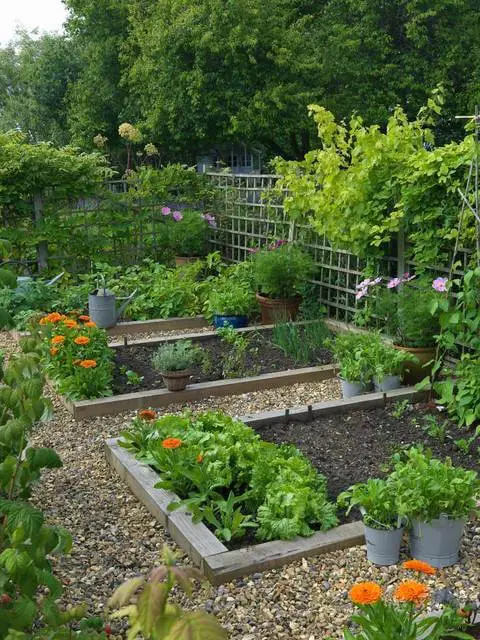
Colorful Pebble Garden
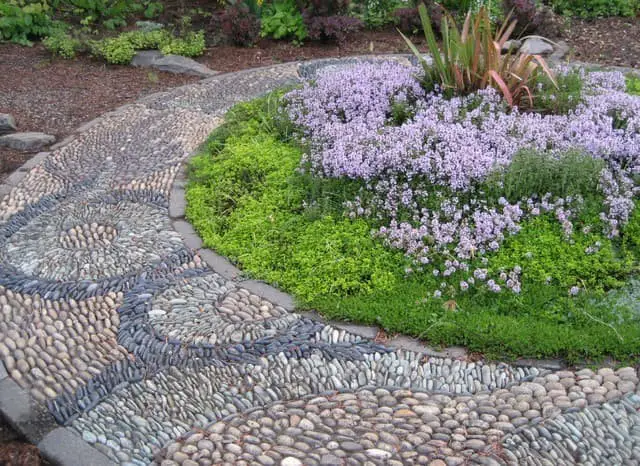
A vibrant and lively pebble garden can be achieved by creatively using multicolored pebbles to create an eye-catching visual display. This unique landscaping design is perfect for areas where traditional gardening may be challenging. The main attraction in this type of garden are the colorful pebbles, which come in a variety of colors such as red, blue, yellow, and green. These pebbles can be arranged to form patterns or designs, adding an extra layer of visual interest.
To create a beautiful pebble garden, several design elements should be considered. In addition to colorful pebbles, plants with complementary colors can be used to add depth and texture to the garden. Other decorations such as sculptures, stepping stones, or water features can also be incorporated to enhance the overall aesthetic. When choosing and arranging the pebbles, it’s essential to decide on a color scheme for the garden.
This can involve selecting contrasting colors for a bold look or similar colors for a more harmonious feel. Once the color scheme is decided upon, purchase the pebbles from garden centers or online. Next, clear the area where the pebble garden will be created and lay down a weed mat to prevent weeds from growing through the pebbles. The pebbles can then be arranged according to the chosen design, which may involve creating stripes, circles, or other patterns.
Alternatively, the pebbles can be mixed together for a more random look. After the pebbles have been laid out, plants and any other decorations can be added to complete the garden.
Wooden Floor Pebble Design
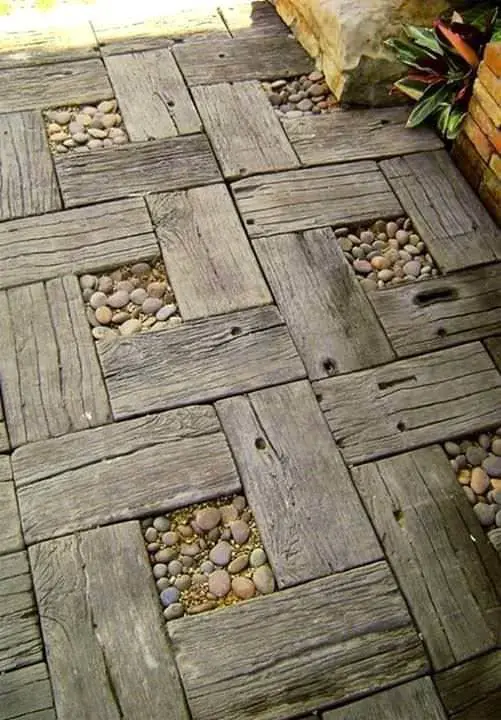
Pebble Garden Contemporary Landscape
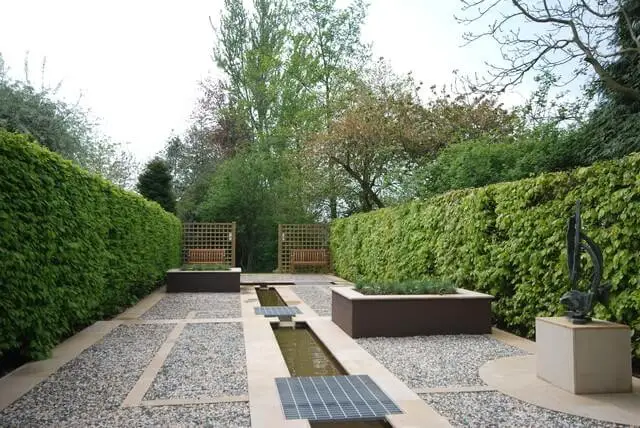
Garden Design Ideas With Pebbles
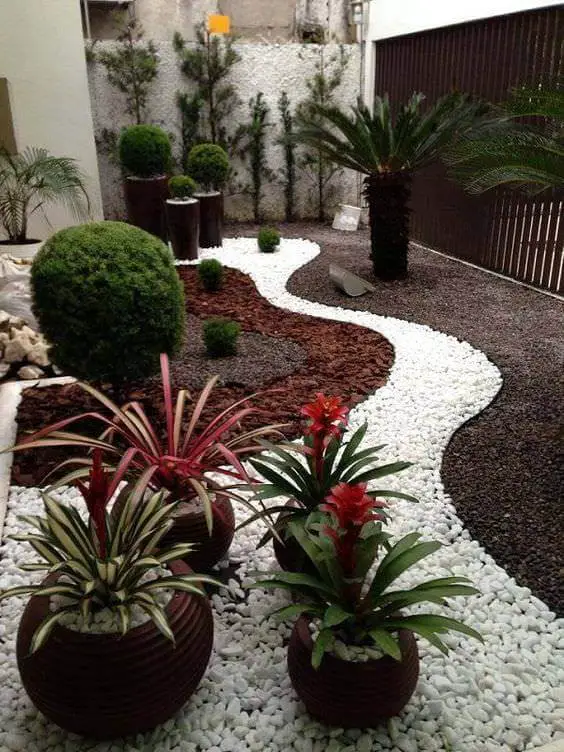
Low Water Front Pebble Design
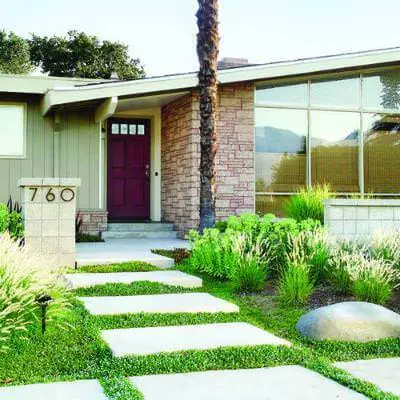
Pavers in Pebbles Pleached Row Of Trees
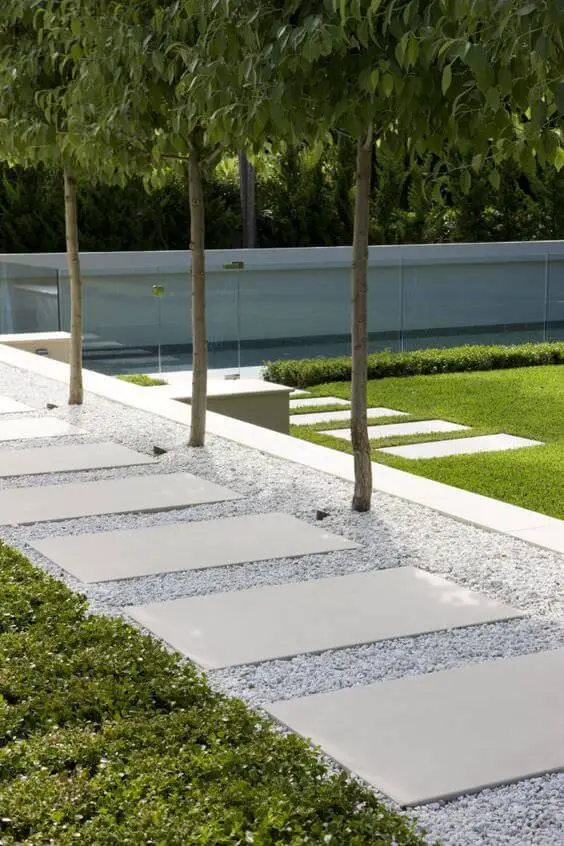
Mist Garden Heaven Traditional Patio Los Angeles
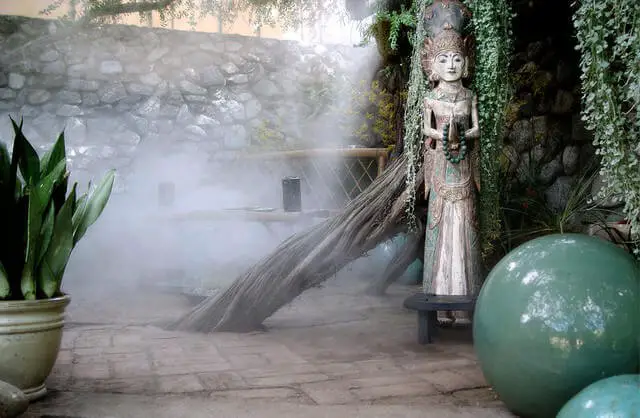
Contemporary Cottage Garden Teak Table and Chairs
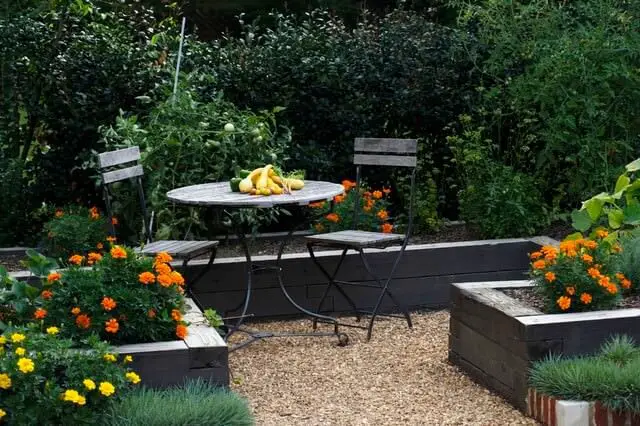
Front Yard Meadow
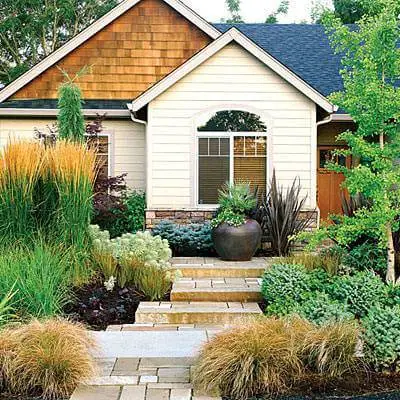
Marble Pebble Garden Design
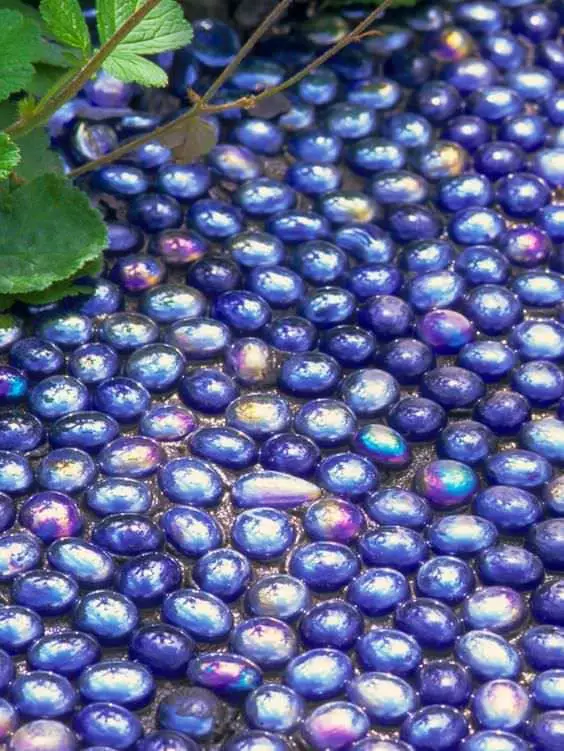
Contemporary Landscape Other Metro
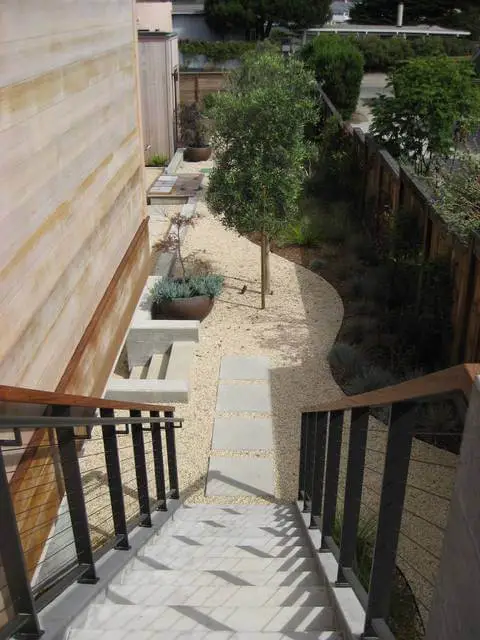
Pebble Mosaics of The Palazzo Real
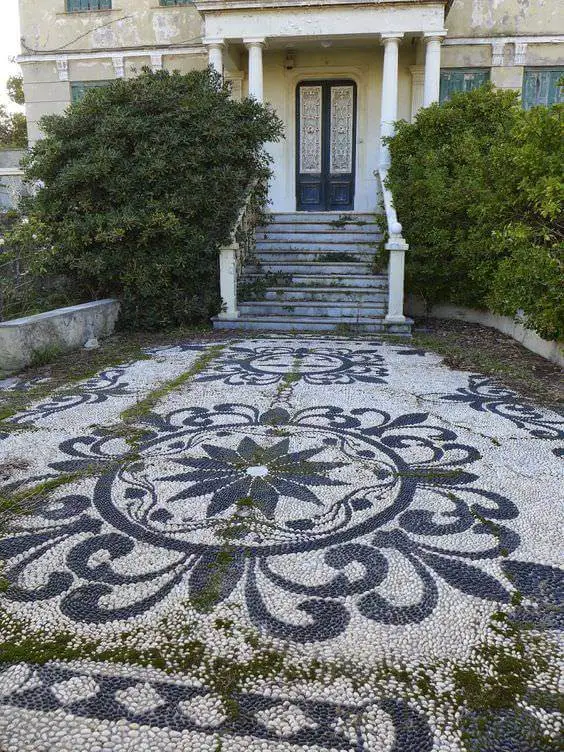
A pebble mosaic garden is a harmonious fusion of artistry and nature. This captivating design element can be created by arranging pebbles in various patterns or designs, producing a visually stunning effect that adds an air of sophistication and creativity to any outdoor space. The core component of this design is the pebbles themselves, which come in diverse sizes, shapes, and colors, allowing for endless creative possibilities.
Geometric patterns, floral motifs, and intricate scenes from nature are just a few examples of the designs you can create. To add depth and visual interest, you may also incorporate larger stones, tiles, or even fragments of glass into your mosaic. To bring this design to life, start by conceptualizing your vision on paper. This will serve as a blueprint for your project. Next, prepare the ground by clearing the area and laying a base of sand or cement to secure the pebbles.
Begin placing your pebbles, adhering to your design, and press them firmly into place to ensure stability. Once all the pebbles are laid, fill in any gaps with grout or additional sand to reinforce their position. Finally, after the grout has dried, clean off any excess material and consider applying a clear sealant to protect your mosaic from the elements.
Asian Landscape Pebble Garden
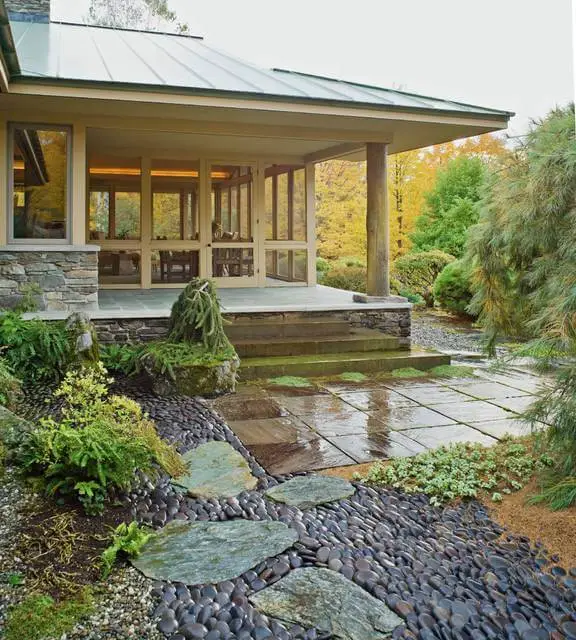
Modern Garden Design
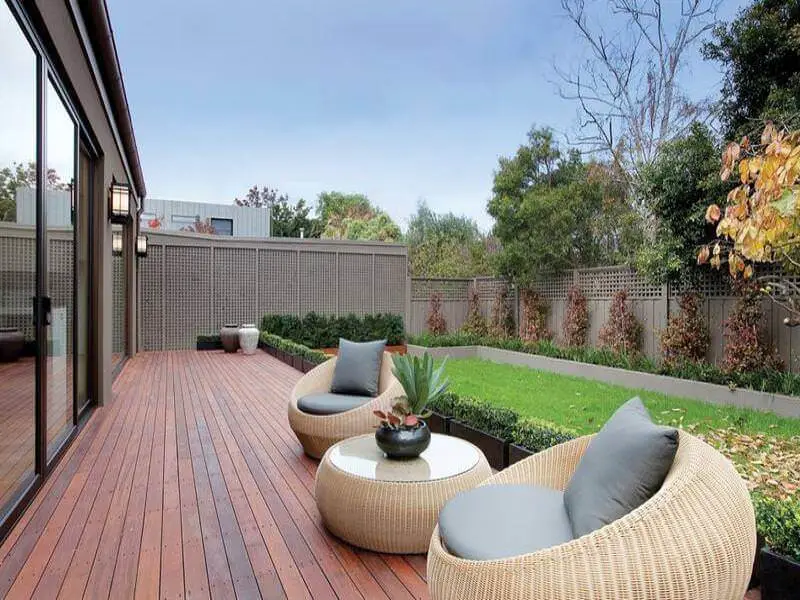
Unwind Fire Pit Pebble

Beautiful Traditional Landscape
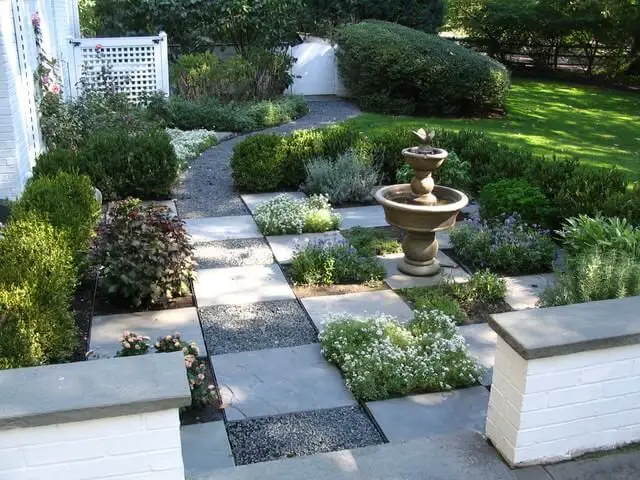
Mediterranean Landscape Idea
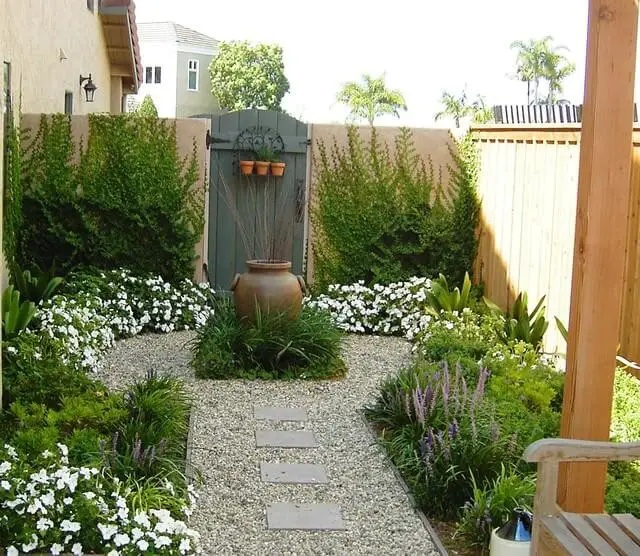
Low Maintenance Garden Design Using Paves
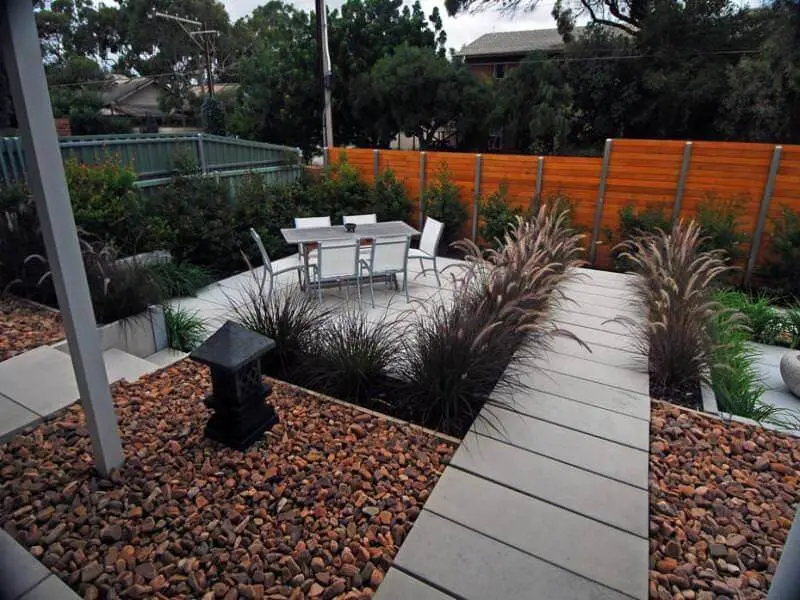
Garden Landscape With Pathway
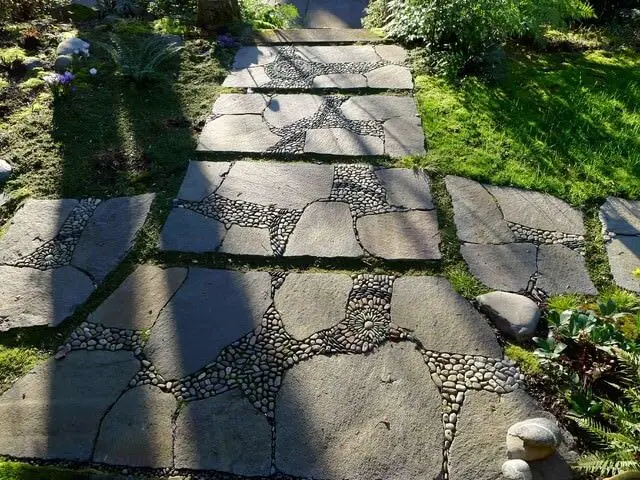
Australian Native Garden Design Using Grass with Pool & Rockery
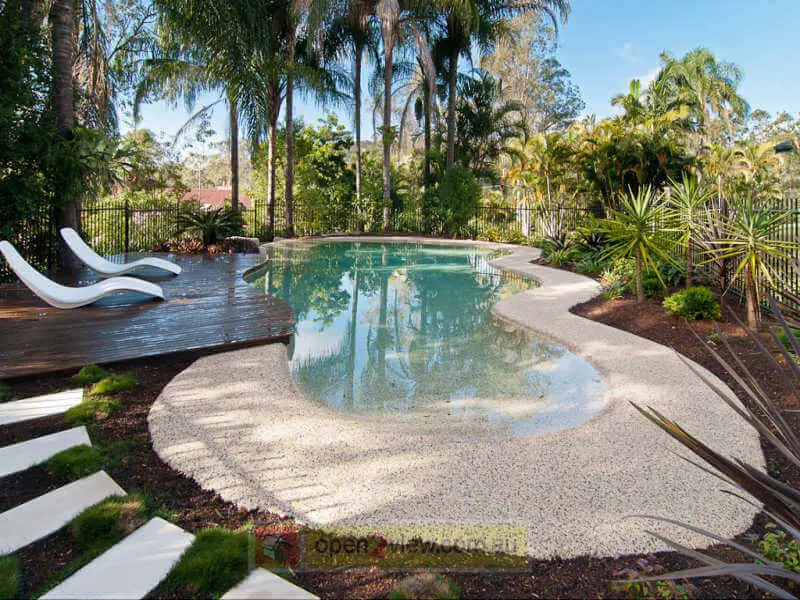
Lat houris Garden Eclectic Landscape
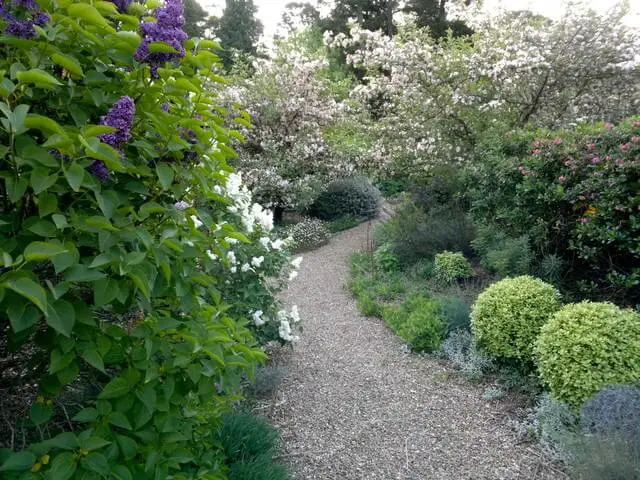
Contemporary Rock Garden Idea
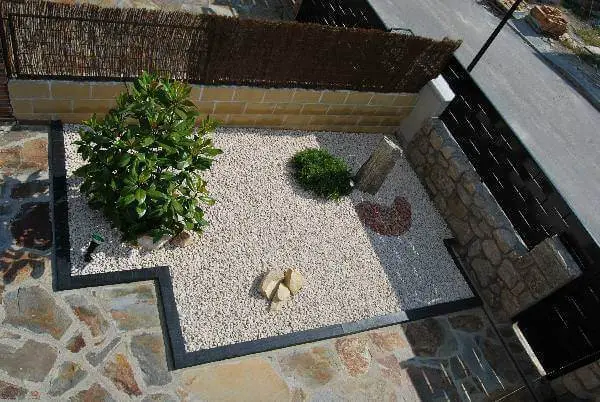
White Flower Garden With Pebble Design
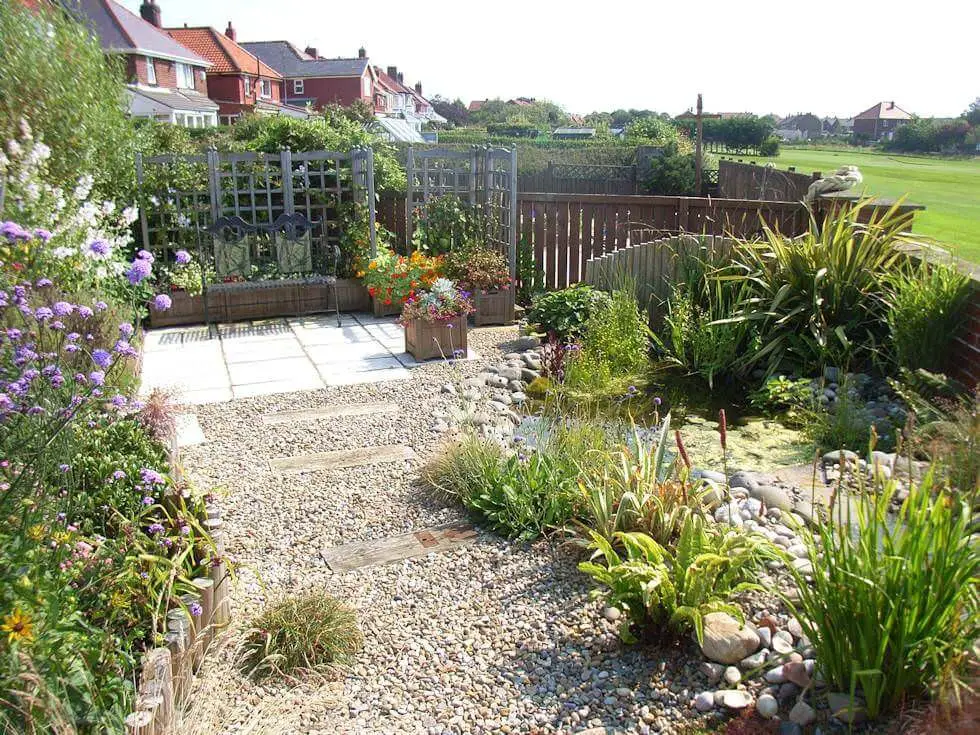
Dry Pebble Garden Landscaping Ideas
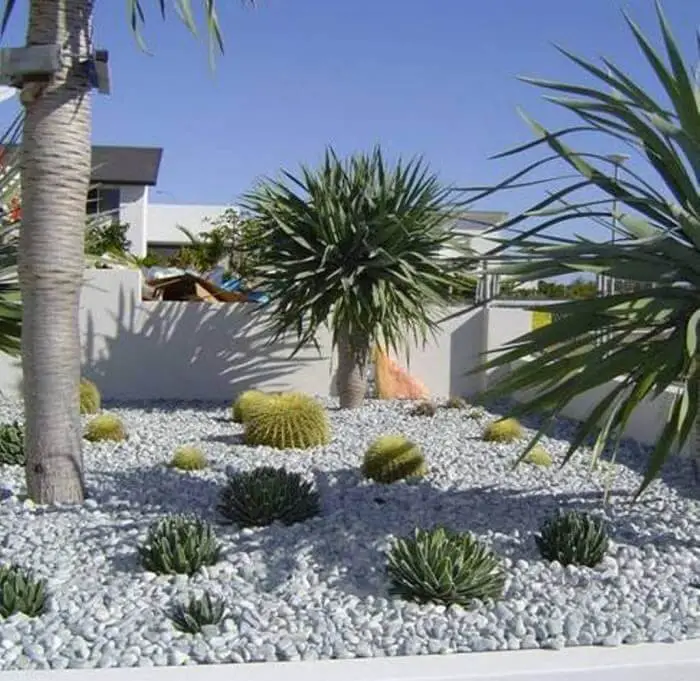
A pebble and succulent garden is a harmonious blend of textures and colors that requires minimal maintenance. By combining the tactile appeal of smooth pebbles with the striking appearance of succulents, this design style is perfect for arid climates, yet adaptable to other environments as well.
The key components of a pebble and succulent garden include:
Pebbles: Serving both aesthetic and functional purposes, pebbles prevent weed growth while facilitating drainage, which is essential for the health of succulents.
Succulents: With an array of shapes, sizes, and colors to choose from, popular succulent varieties such as Echeveria, Sedum, Sempervivum, and Aloe can add unique character to your garden.
The layout of the arrangement is entirely up to personal preference – some people prefer a natural, random design while others opt for specific patterns or groupings.
To ensure the well-being of your succulents in this type of garden, heed these care tips:
Watering: Succulents are remarkably resilient to drought and can survive with minimal watering. However, overwatering can be detrimental, so it’s essential to check the soil regularly and only water when it has become completely dry.
Sunlight: While most succulents thrive in sunlight, some may require shade or filtered light to avoid sunburn (discoloration). Monitor your plants and adjust their placement accordingly.
Drainage: Adequate drainage is crucial for succulent health. Make sure the garden area does not retain water.
Fertilizer: While succulents don’t require frequent feeding, a balanced fertilizer during the growing season can promote healthy growth.
Winter Care: Some succulent varieties are frost-tolerant, but many are not. If you live in an area with cold winters, consider using portable planters to bring your succulents indoors or provide some form of frost protection.
White Pebble Space For Small
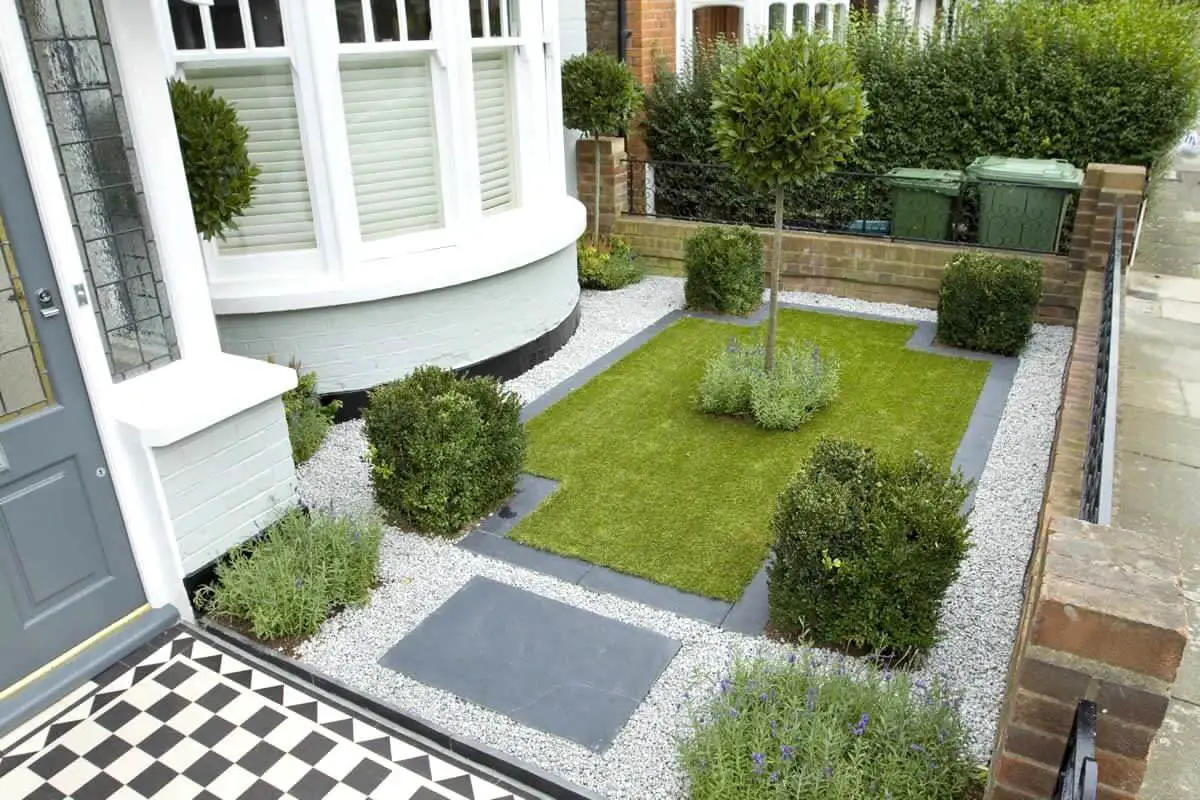
Landscaped Garden Design From a Real Australian Home
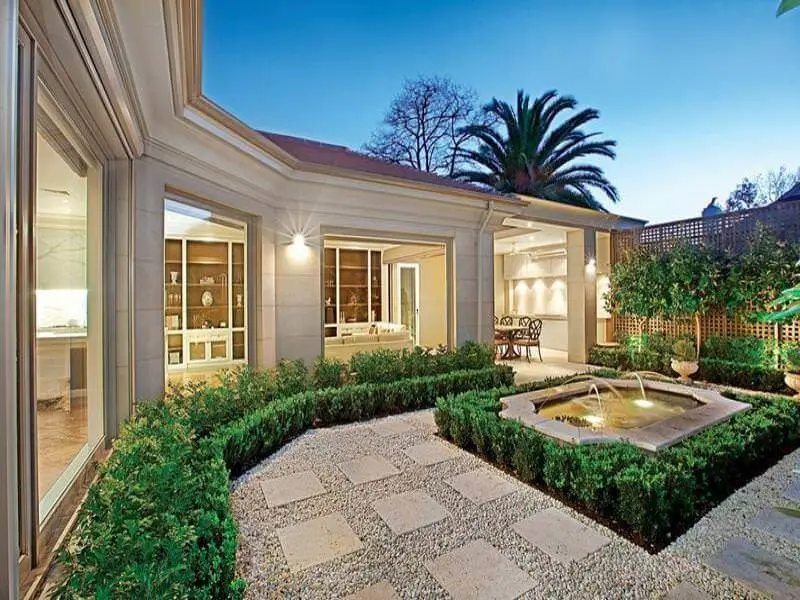
Beautiful Garden Pebble Design
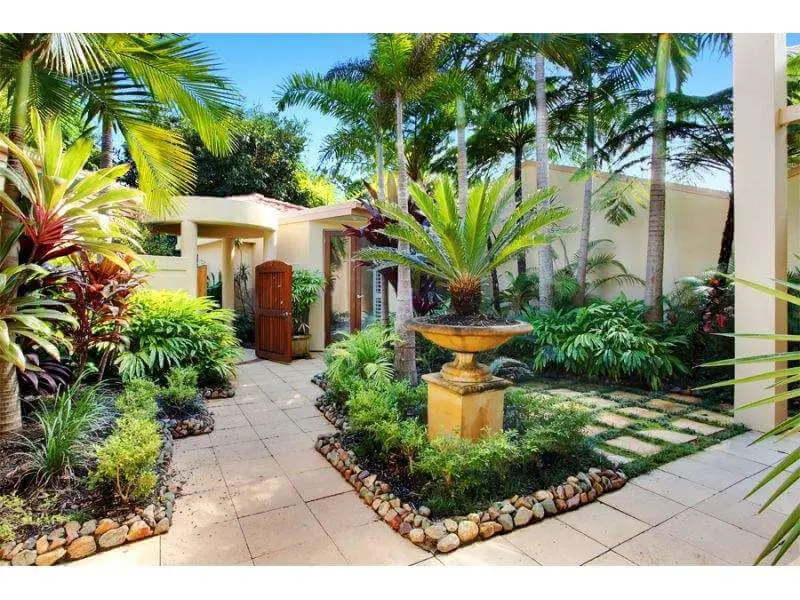
Elegant Pebble Patio Design
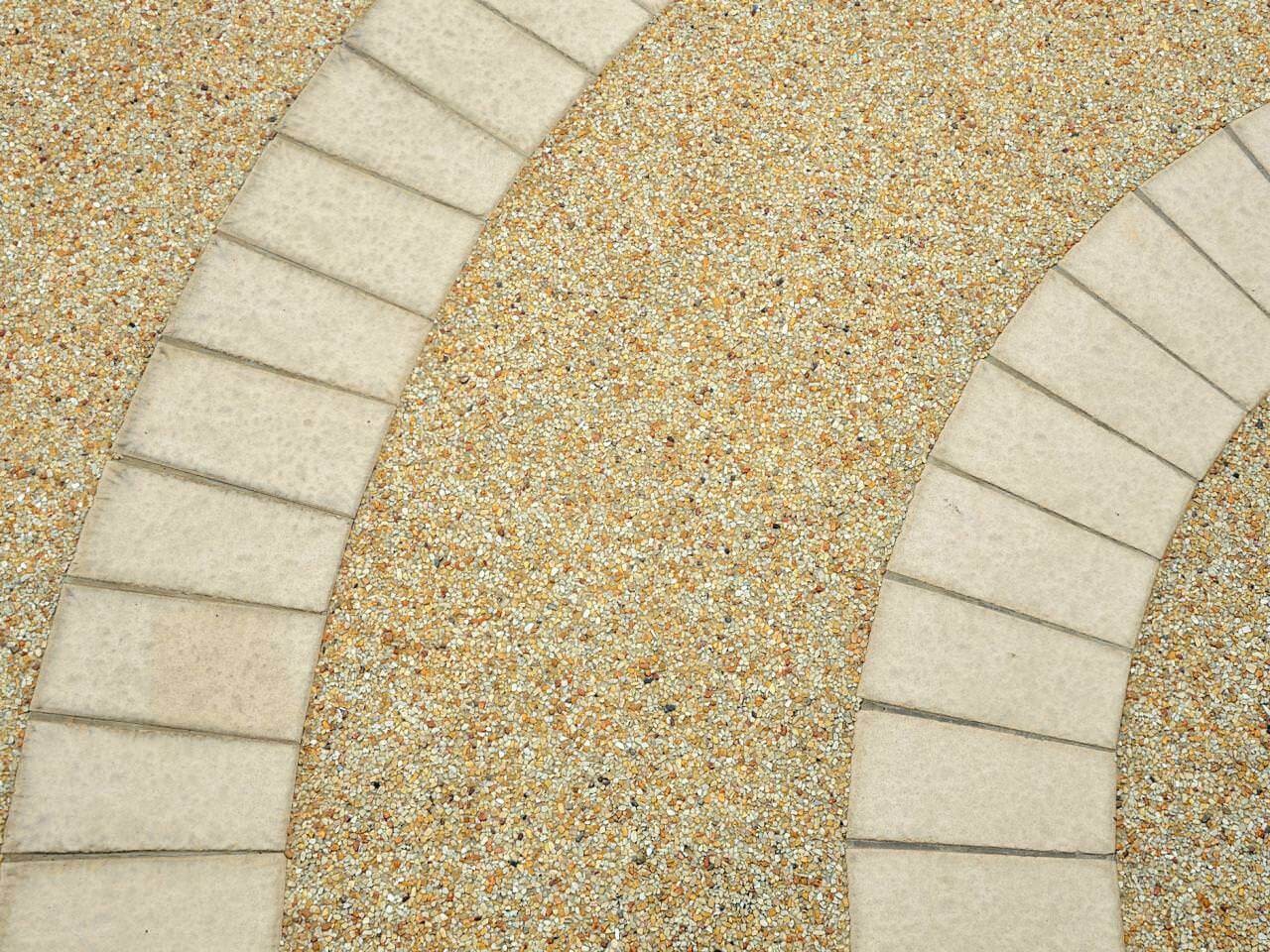
Garden Paths Patio Designs Pebbles
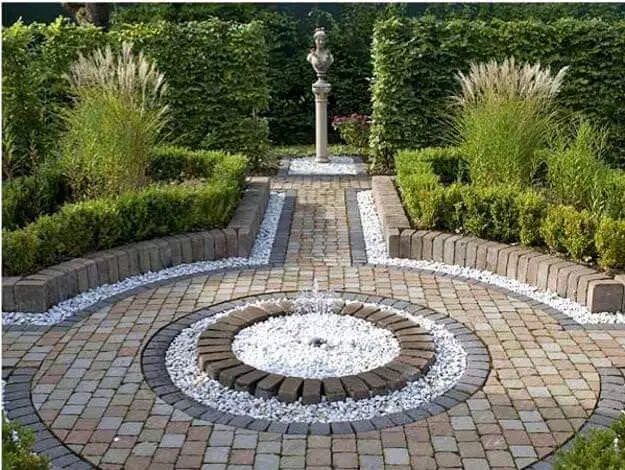
Maintaining Your Pebble Garden
A pebble garden, though a stunning and low-fuss enhancement to any outdoor space, does necessitate some TLC to preserve its visual appeal. To that end, here’s a step-by-step guide on how to meticulously clean and upkeep your pebble garden so it continues to thrive.
Cleaning and Maintaining Pebbles
While pebbles are aesthetically pleasing, they can become dirty over time due to accumulated dirt. To keep them clean, try using a broom or hosing them down to remove any debris. However, it’s essential to avoid using pressure washers as this method can stir up more dirt from beneath the gravel, making the situation worse.
For a simple and eco-friendly cleaning solution, combine equal parts of white vinegar and water in a bucket.
You can also add a few drops of dish soap for extra cleaning power. Dip a stiff-bristle brush or broom into the solution and scrub the rocks, focusing on any areas with visible stains or algae growth.
Dealing with Weeds
When it comes to maintaining a pebble garden, one common challenge is dealing with weeds that can unexpectedly sprout up through the surface. To effectively manage these unwanted guests, consider the following strategies:The most labor-intensive approach is removing them by hand, which may be necessary for larger areas. A more proactive and efficient method is to lay down a weed mat before adding your pebbles. This will help prevent weeds from germinating in the first place.
If you’re dealing with a severe infestation, using a pet-friendly weed killer might be the most practical solution. Just remember to carefully select a product that’s safe for your furry friends if they’re part of your household.
Replenishing Pebbles Over Time
While your pebbles may lose their original luster over time, there are ways to revive or replace them if needed. If the discoloration is significant, it might be time to refresh your collection by swapping out old pebbles for new ones. Alternatively, you can add a fresh layer of pebbles on top of the existing ones, just ensure that this won’t compromise the drainage system.
Conclusion
As you embark on the creative journey of building a pebble garden, whether it’s a serene river-inspired haven or a vibrant splash of color, you’re not only adding aesthetic appeal to your outdoor space, but also expressing your unique personal style. This rewarding landscaping project offers a chance to get creative and showcase your flair for design.
In our comprehensive guide, we’ve covered the essential elements of designing a pebble garden, from carefully selecting the right pebbles and plants to arranging them in a harmonious balance that echoes nature or bursts with color. We’ve also explored the importance of maintenance, including gentle cleaning, thoughtful weed management, and strategic replenishment of your pebbles over time. Now it’s your turn to take the reins!
With a dash of planning and imagination, you can bring your vision to life and create a stunning pebble garden that reflects your individual taste and enhances your outdoor space. Remember, there’s no one-size-fits-all approach – what matters most is that you delight in the process and be thrilled with the end result. So why not take the leap? You might just discover that the journey of creating and nurturing a pebble garden is as rejuvenating and fulfilling as basking in its beauty.
Happy gardening!
References
When it comes to maintaining a beautiful and well-manicured garden, cleaning garden stones is an essential step. Over time, these stones can become covered in dirt, grime, and even mold, which can not only mar their appearance but also create an environment that’s less than ideal for plant growth. Fortunately, cleaning garden stones is a relatively simple process that can be done with a few basic household items and some elbow grease.
According to various sources, including wikiHow, gardening experts recommend using a mixture of water and baking soda to scrub away dirt and grime, followed by a rinse with warm water. For more stubborn stains, such as mud, online forums like BBC Gardeners’ World Magazine suggest using a gentle scrubbing action with a soft-bristled brush or cloth, along with some mild detergent.
Additionally, Reddit’s landscaping community offers the advice to use a toothbrush and some white vinegar for smaller stones and pebbles. For inspiration on how to incorporate these cleaned stones into your garden design, it’s worth taking a look at the beautiful examples found in archives like Dumbarton Oaks’ collection of drawings and photographs by garden area.

